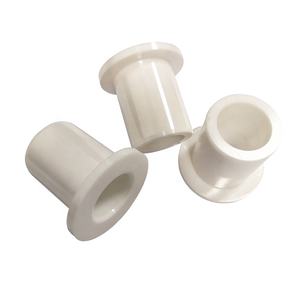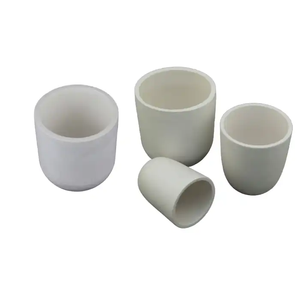Discover Premium Ceramic Products | Durability & Elegance United | Advanced Ceramics
PRODUCT PARAMETERS
Description
Introduction to Alumina Ceramics
Alumina ceramics are known for their high hardness, wear resistance, corrosion resistance, good electrical insulation and high temperature stability. According to the different alumina content, it can be divided into different grades, such as 95 porcelain, 99 porcelain, etc., among which 99 porcelain refers to ceramic materials with an alumina content of 99%. As the alumina content increases, its mechanical strength and electrical insulation properties will also increase accordingly.
Characteristics of Alumina Ceramics
High Hardness: Alumina ceramics have extremely high hardness, which makes it very wear-resistant and suitable for manufacturing abrasive tools and parts that require wear resistance.
Wear resistance: Due to its high hardness, alumina ceramics show excellent wear resistance and are suitable for manufacturing parts for long-term use.
Corrosion resistance: Alumina ceramics have good resistance to most acids and alkalis, making them widely used in the chemical industry.
Good electrical insulation: As an excellent electrical insulating material, alumina ceramics are widely used in electronic and electrical products.
High temperature stability: Ability to withstand extremely high temperatures without significant physical or chemical changes, which makes it an ideal choice for applications in high temperature environments.
Biocompatibility: In the medical field, certain grades of alumina ceramics are used to make medical devices such as artificial joints due to their good biocompatibility.
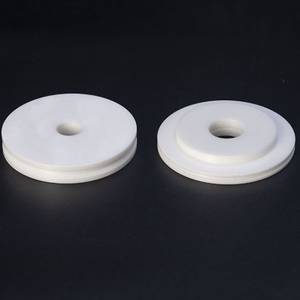
(High Temperature Porous Ceramics Alumina Ceramic Semicircle)
Specifications of High Temperature Porous Ceramics Alumina Ceramic Semicircle
High Temperature Porous Ceramics Alumina Ceramic Semicircle is designed for demanding industrial applications. This product combines high-temperature resistance with a porous structure. The material is made from high-purity alumina. It ensures stability in extreme heat. The semicircle shape allows easy integration into systems requiring curved components. The porous nature supports gas or liquid filtration. It maintains structural integrity under thermal stress.
The ceramic operates effectively in temperatures up to 1700°C. It resists thermal shock. Rapid temperature changes do not cause cracking. The open porosity ranges between 20% and 40%. Pore size can be customized. This adjusts flow rates for specific uses. The material has low density. It reduces weight in high-temperature setups. Mechanical strength remains high despite porosity.
Chemical resistance is a key feature. The ceramic withstands corrosive gases and acidic environments. It does not degrade when exposed to alkalis or molten metals. This makes it suitable for harsh industrial processes. The semicircle design fits into reactors, furnaces, and exhaust systems. It provides uniform heat distribution. The shape minimizes stress points during installation.
Applications include metal processing, chemical filtration, and aerospace components. It is used in thermal insulation layers. The porous structure aids in catalyst support. It enhances efficiency in catalytic converters. The product is ideal for environments requiring heat management and filtration.
Custom sizes and porosity levels are available. Standard dimensions include radii from 50mm to 300mm. Thickness ranges between 10mm and 50mm. The ceramic is machined to precise tolerances. Surface finishes can be adjusted for specific needs.
This alumina ceramic semicircle is durable. It reduces maintenance costs in high-temperature systems. The material’s longevity ensures consistent performance. It is a reliable solution for industries prioritizing heat resistance and filtration.
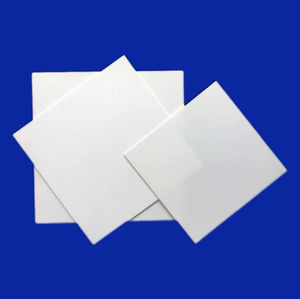
(High Temperature Porous Ceramics Alumina Ceramic Semicircle)
Applications of High Temperature Porous Ceramics Alumina Ceramic Semicircle
High-temperature porous ceramics alumina ceramic semicircle parts serve critical roles across industries. These components handle extreme heat, resist corrosion, manage thermal stress, and allow controlled gas or liquid flow. Their porous structure combines strength with permeability, making them ideal for demanding environments.
In metallurgy, they function as furnace linings or molten metal filters. The semicircle shape fits equipment designs, reducing installation complexity. They capture impurities during metal casting, improving product quality. Thermal stability prevents warping even at temperatures above 1600°C.
Chemical processing plants use them as catalyst supports or reactor internals. The porous surface maximizes contact between gases and catalysts, boosting reaction efficiency. Alumina’s resistance to acids and alkalis ensures durability in corrosive settings. Their semicircular form simplifies maintenance, allowing quick replacement in round reactors.
Energy sectors apply these ceramics in combustion systems or exhaust filtration. They act as heat shields in gas turbines, protecting metal parts from high-temperature damage. Porous structures enable uniform fuel distribution in burners, enhancing combustion efficiency. In power plants, they filter particulate matter from hot gases, meeting emission standards.
Aerospace and automotive industries rely on them for sensors and insulation. The semicircle shape integrates into curved engine components, providing thermal insulation without adding weight. Porous alumina resists thermal shock, maintaining performance during rapid temperature changes. Sensors made from this material detect gas composition in exhaust systems, aiding emission control.
Manufacturing sectors use these ceramics for precision tooling. Their porous nature allows controlled coolant flow during high-speed machining, reducing tool wear. The semicircle design suits grinding or polishing tools for curved surfaces, ensuring consistent contact. Alumina’s hardness extends tool lifespan, lowering production costs.
Medical equipment employs them as sterilizable filters or implant coatings. High-temperature tolerance allows repeated autoclaving without degradation. Porous surfaces promote bone adhesion in medical implants, improving integration. The semicircle format fits devices like joint replacements, aligning with anatomical shapes.
These ceramics support environmental tech, such as wastewater treatment or air purification. Porous structures trap pollutants in high-temperature exhaust streams. Alumina’s inert nature prevents chemical reactions with filtered substances, ensuring stable operation. The semicircle design adapts to circular filtration units, optimizing space use.
Company Introduction
Advanced Ceramics founded on October 17, 2014, is a high-tech enterprise committed to the research and development, production, processing, sales and technical services of ceramic relative materials and products.. Since its establishment in 2014, the company has been committed to providing customers with the best products and services, and has become a leader in the industry through continuous technological innovation and strict quality management.
Our products includes but not limited to Silicon carbide ceramic products, Boron Carbide Ceramic Products, Boron Nitride Ceramic Products, Silicon Carbide Ceramic Products, Silicon Nitride Ceramic Products, Zirconium Dioxide Ceramic Products, Quartz Products, etc. Please feel free to contact us.(nanotrun@yahoo.com)

Payment Methods
T/T, Western Union, Paypal, Credit Card etc.
Shipment Methods
By air, by sea, by express, as customers request.

5 FAQs of High Temperature Porous Ceramics Alumina Ceramic Semicircle
High-temperature porous alumina ceramic semicircle is a specialized material. It handles extreme heat. It has a porous structure. This allows gases or liquids to pass through. It is made from alumina. Alumina offers excellent thermal stability. The semicircle shape fits specific industrial setups.
These ceramics handle up to 1700°C. They stay stable under repeated heating. Their structure prevents cracking. They resist thermal shock. Sudden temperature changes won’t damage them. This makes them reliable in harsh conditions.
They are used in high-temperature filtration. Examples include molten metal filters. They work in furnace linings. They separate gases in industrial processes. They support catalysts in chemical reactors. The semicircle design fits pipes or rounded equipment.
They last longer than metal or plastic alternatives. Metals corrode under high heat. Plastics melt. Porous alumina resists corrosion. It doesn’t degrade chemically. It handles pressure changes. Maintenance costs stay low. Replacement is rare.
Clean them with non-abrasive methods. Use compressed air or mild solvents. Avoid harsh chemicals. Check for cracks or blockages regularly. Replace if pores are clogged beyond cleaning. Handle carefully during installation. Avoid mechanical impacts. Store in dry conditions to prevent moisture absorption.
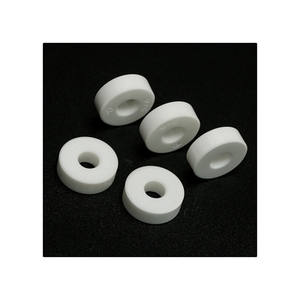
(High Temperature Porous Ceramics Alumina Ceramic Semicircle)
REQUEST A QUOTE
RELATED PRODUCTS
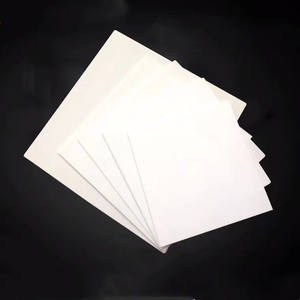
99 Ceramic Machining Parts 95 96 99 99.8 Al2O3 Alumina Ceramic
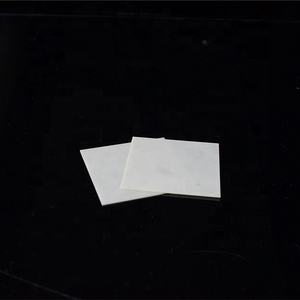
Precision 99% alumina ceramic round rod
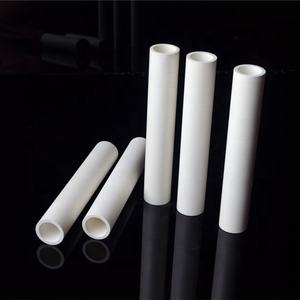
High Temperature Chemical Industrial 92 95 Al2o3 High Alumina Ceramic Plate
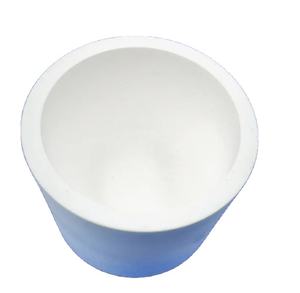
High Temperature Alumina Ceramic Sagger
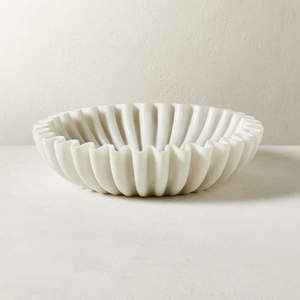
99.6 % Alumina Ceramic Sheet
